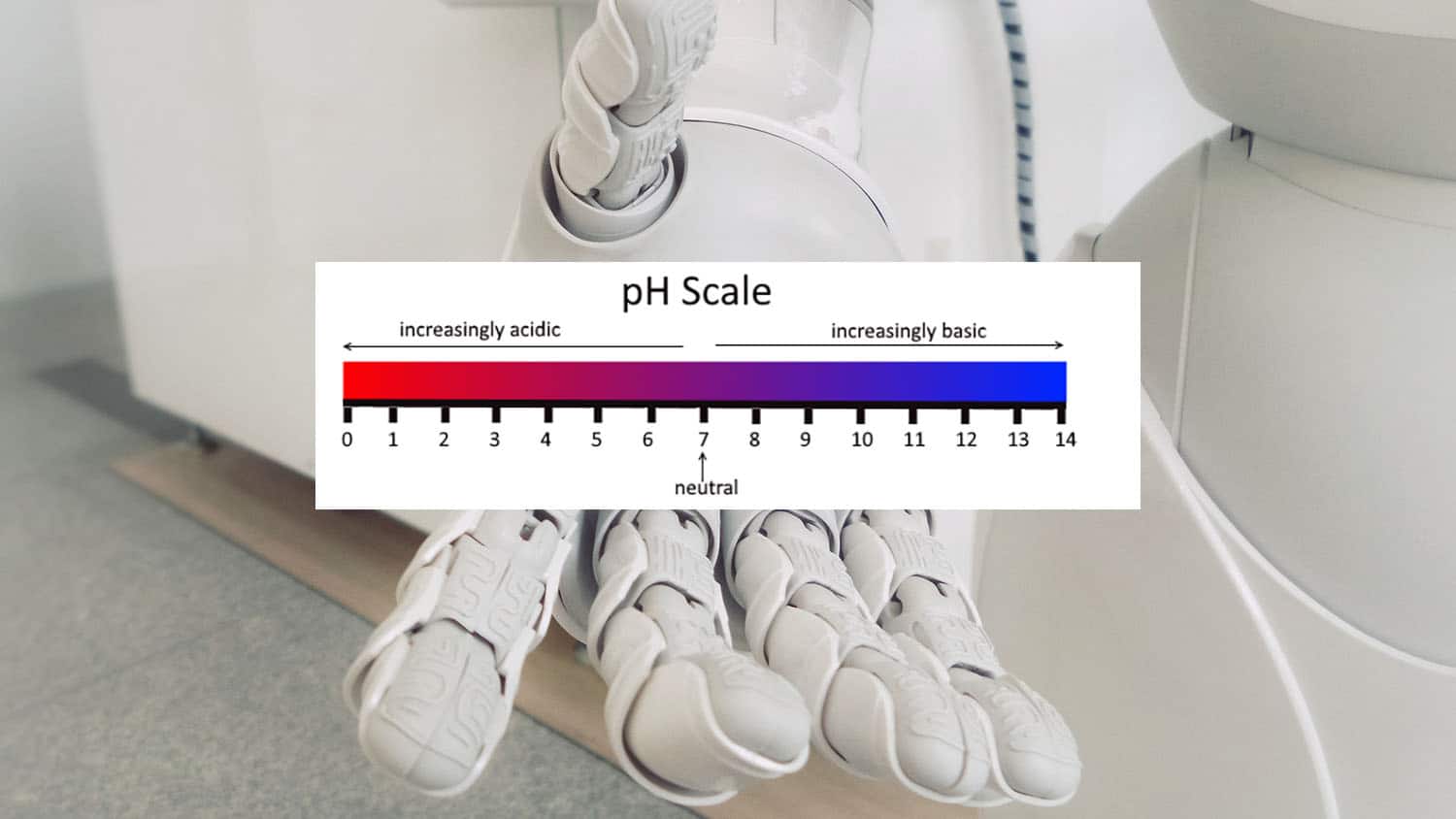New HS Curriculum Teaches Color Chemistry and AI Simultaneously

For Immediate Release
North Carolina State University researchers have developed a weeklong high school curriculum that helps students quickly grasp concepts in both color chemistry and artificial intelligence – while sparking their curiosity about science and the world around them.
To test whether a short high school science module could effectively teach students something about both chemistry – a notoriously thorny subject – and artificial intelligence (AI), the researchers designed a relatively simple experiment involving pH levels, which reflect the acidity or alkalinity of a liquid solution.
When testing pH levels on a test strip, color conversion charts provide a handy reference: more acidic solutions turn test strips red when a lot of acidity is present and turn test strips yellow and green as acid levels weaken. Test strips turn deep purple when liquids are highly alkaline and turn blue and dark green as alkaline levels decline. Numerical ranges of pH span from 0 to 14, with 7 being neutral – about the level of the tap water in your home – and the lower amounts reflecting greater acidity with higher numbers reflecting greater alkalinity.
“We wanted to answer the question: ‘Can we use machine learning to more accurately read pH strips than visually?’” said Yang Zhang, assistant professor of textile engineering, chemistry and science and a co-corresponding author of a paper describing the work. “It turns out that the student-trained AI predictive model was about 5.5 times more precise than visual interpretations.”
The students used their cellphone cameras to take pictures of pH test strips after wetting them in a variety of everyday liquids – beverages, pond or lake water, cosmetics and the like – and predicted their pH values visually. They also received test strips from the instructors with known pH levels taken with sophisticated instrumentation and predicted those visually.
“We wanted students to think about the real-world implications of this type of testing, for example in underdeveloped places where drinking water might be an issue,” Zhang said. “You might not have a sophisticated instrument, but you really want to know if the pH level is less than 5 versus a 7.”
Students entered data into free machine learning software called Orange, which has no lines of code, making it easy for novices to work with. They worked to convert test strip images and pH values into predictions, with machine learning improving accuracy as it learned to delineate the more subtle changes in test-strip color with the corresponding pH values. Students then compared their machine learning pH level predictions with their visual predictions and found that the AI predictions, though not perfect, were much closer to the true pH value than their visual predictions.
The researchers also surveyed the students before and after the weeklong curriculum and found that they reported being more motivated to learn and more knowledgeable about both chemistry and AI.
“Students could see the relevance of cutting-edge technology when applied to real-world problems and scientific advancements,” said Shiyan Jiang, assistant professor of learning design and technology at NC State and co-corresponding author of the paper. “This practical application not only enhances their understanding of complex science concepts but also inspires them to explore innovative solutions, fostering a deeper appreciation for the intersection of cutting-edge technology and science, in particular chemistry.”
“On the chemistry side, there are a lot of similar color chemistry concepts we can teach this way,” Zhang said. “We can also scale this curriculum up to include more students.”
The paper appears in the Journal of Chemical Education. NC State graduate students Jeanne McClure, Jiahui Chen and Yunshu Liu co-authored the paper. The work was supported by the National Science Foundation (grants CHE-2246548, DRL-1949110 and DRL-2025090) and the National Institutes of Health (grants R21GM141675 and R01GM143397).
-kulikowski-
Note to editors: The paper abstract follows.
“Integrating Machine Learning and Color Chemistry: Developing a High-School Curriculum Towards Real-World Problem-Solving”
Authors: Shiyan Jiang, Jeanne McClure, Jiahui Chen, Yunshu Liu and Yang Zhang, NC State University
Published: Dec. 7, 2023 in Journal of Chemical Education
DOI: 10.1021/acs.jchemed.3c00589
Abstract: Artificial intelligence (AI) is rapidly transforming our world, making it imperative to educate the next generation about both the potential benefits and challenges associated with AI. This study presents a cross-disciplinary curriculum that connects AI and chemistry disciplines in the high school classroom. Particularly, we leverage machine learning (ML), an important and simple application of AI to instruct students to build an ML-based virtual pH meter for high-precision pH read-outs. We used a “codeless” and free ML neural network building software – Orange, along with a simple chemical topic of pH to show the connection between AI and chemistry for high-schoolers who might have rudimentary backgrounds in both disciplines. The goal of this curriculum is to promote student interest and drive in the analytical chemistry domain and offer insights into how the interconnection between chemistry and ML can benefit high-school students in science learning. The activity involves students using pH strips to measure the pH of various solutions with local relevancy and then building an ML neural network model to predict the pH value based on color changes of pH strips. The integrated curriculum increased student interest in chemistry and ML and demonstrated the relevance of science to their daily lives and global issues. This approach is transformative in developing a broad spectrum of integration topics between chemistry and ML and understanding their global impacts.


